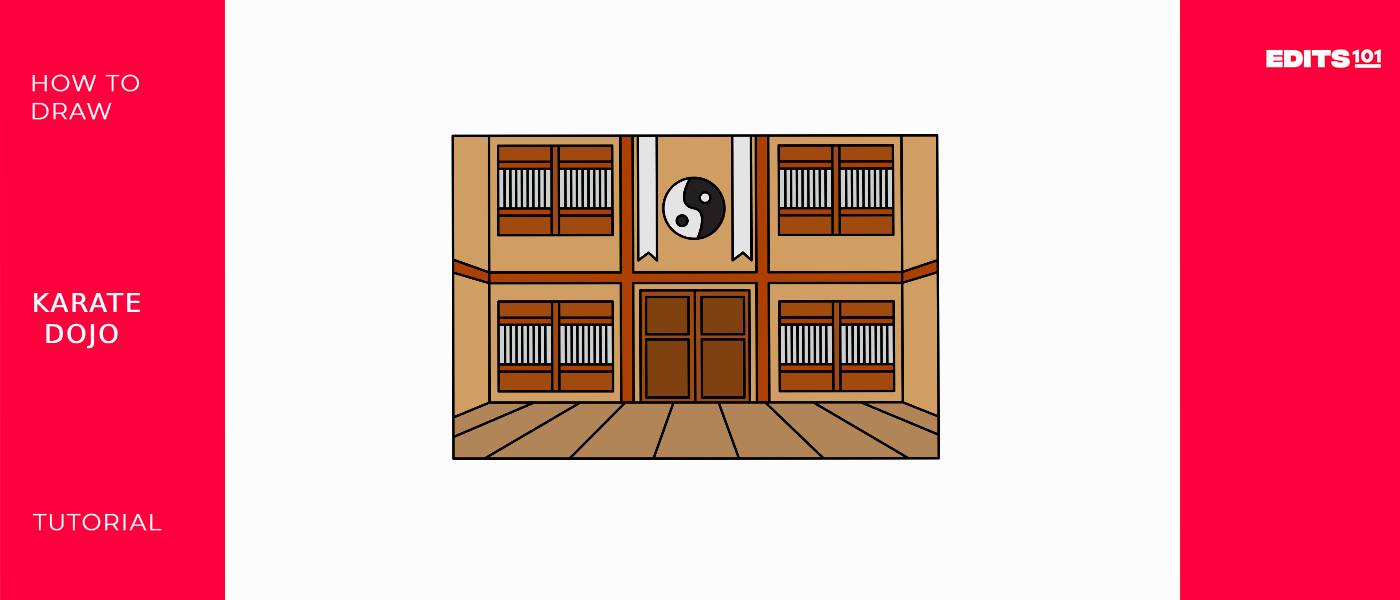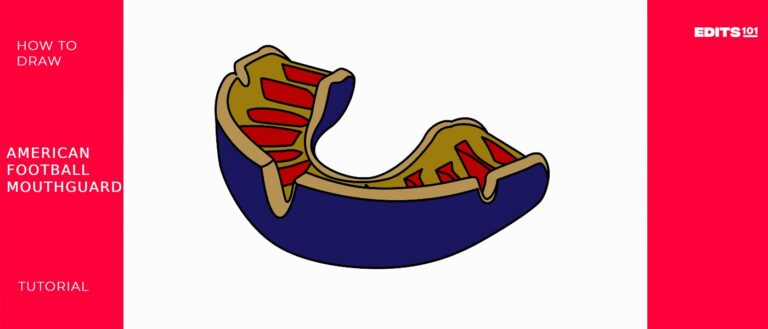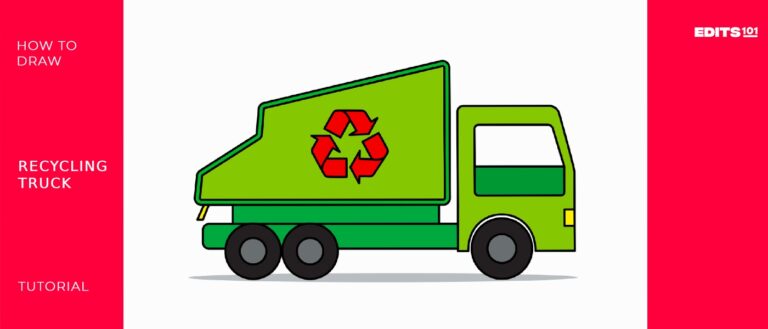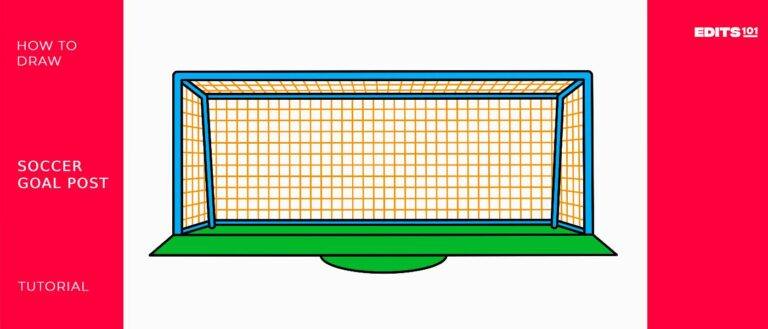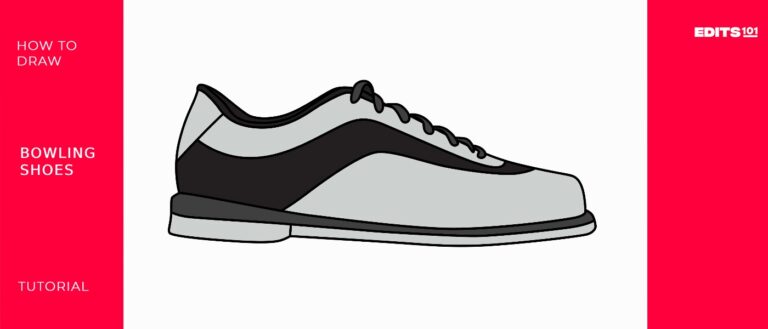How to Draw a Karate Dojo | A Step-by-Step Guide
A karate dojo is a traditional Japanese and Chinese training facility where individuals practice and learn the martial art of karate.
The dojo serves as a space for physical training, mental discipline, self-improvement, and personal growth through consistent practice and adherence to the principles of karate such as respect, humility, and perseverance.
Students engage in various activities, such as sparring sessions, kata demonstrations, strength conditioning exercises, and meditation to enhance their skills and deepen their understanding of the art of karate.
| Steps | Complexity Level |
| The Baseline | 1 |
| The Room Structure | 2 |
| The Wall Frame | 3 |
| The Windows | 3 |
| The Doors | 2 |
| The Floor Lines | 2 |
| The Karate Logo | 3 |
What You Will Need
- Drawing paper or sketchbook
- Pencils (2b, 3b or 5b)
- An eraser
- A ruler
- Mathematical drawing compass
- Colored pencils or markers
- 20-25 minutes
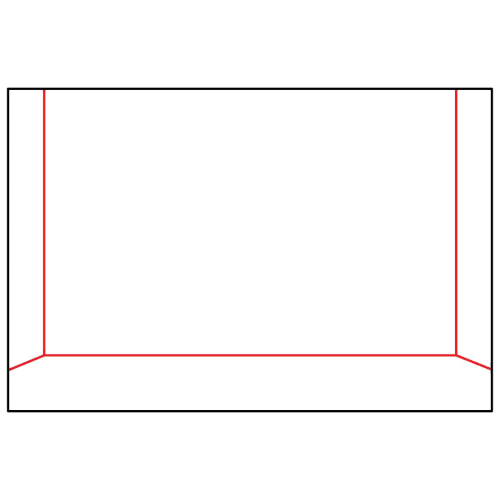
How to Draw a Karate Dojo
In today’s tutorial, you will learn how to draw your very own karate dojo in nine easy steps.
Seven of those include the sketching process: starting from the baseline, then adding the room structure, the wall frame, the windows, doors, floor lines, until finally topping your drawing off with a cool karate logo!
You’ll then be provided with an additional two steps on how to enhance the outcome of your sketch. Ready to get started?
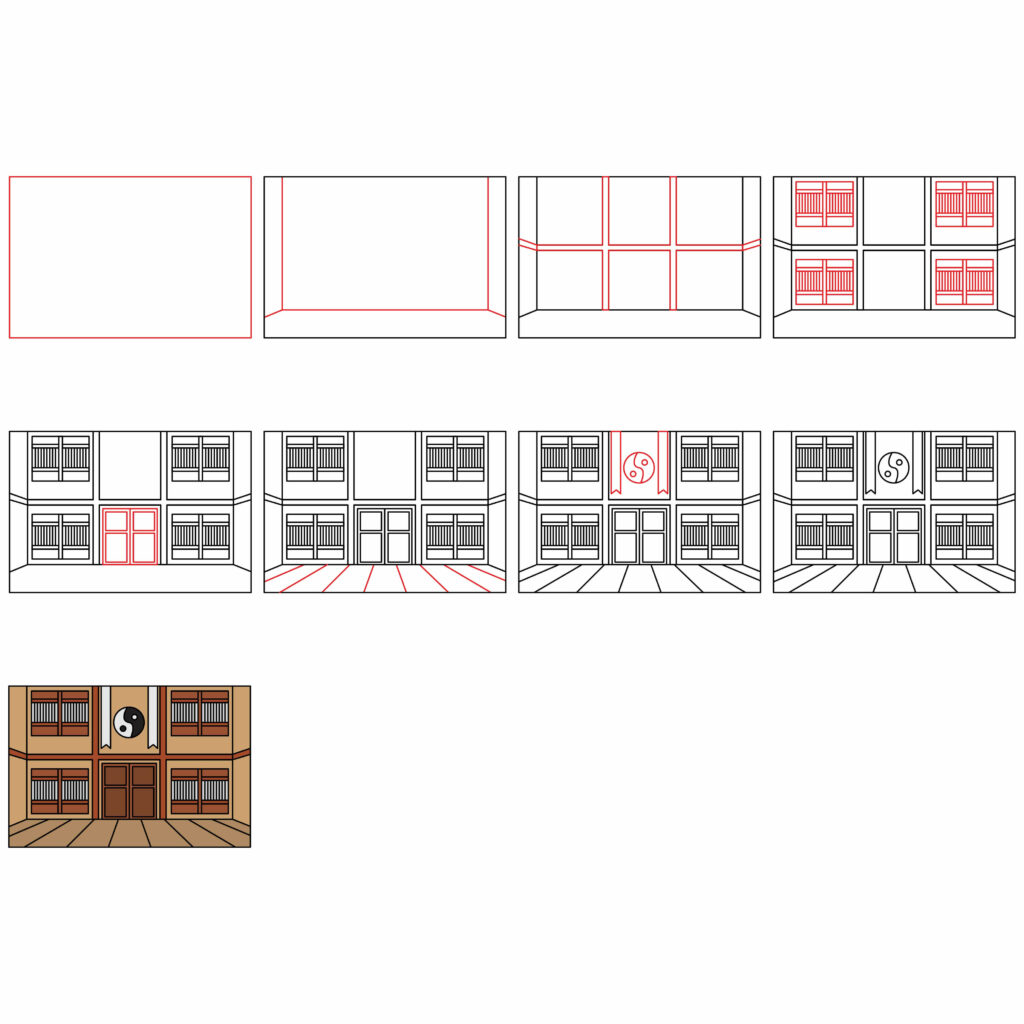
Step 1: Draw the Baseline
Consider the baseline as the frame of your drawing. Everything you will draw during the following steps will be added inside the baseline.
Before you begin sketching, ensure your drawing paper is in a preferred orientation. While a portrait orientation is very common for sketches, a landscape orientation will surely heighten the detail of your dojo by giving you more room to draw.
When you’re ready, start by drawing a big rectangle across the center of your page. Use a ruler for straight lines.
- Flip your drawing paper into a landscape orientation
- Draw a big rectangle in the middle of your page
- Use a ruler for straight lines
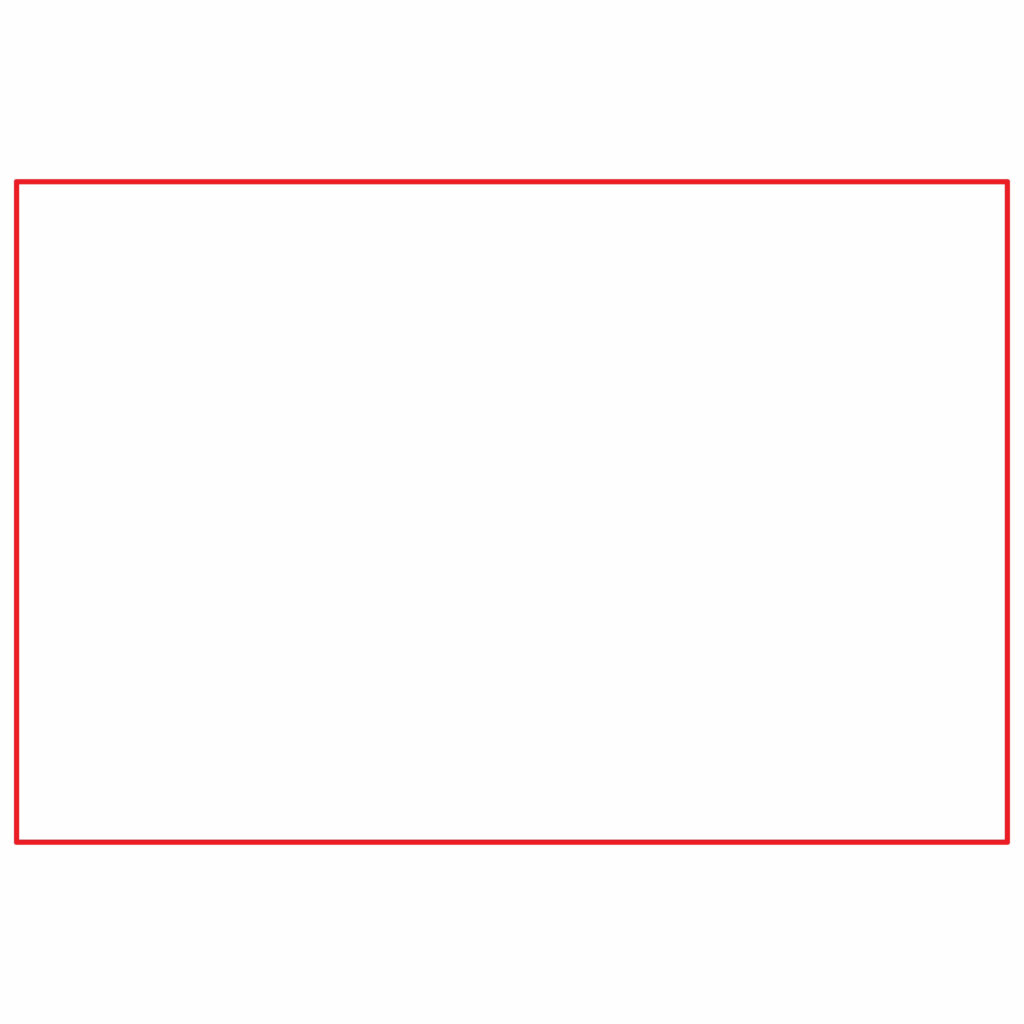
Step 2: Draw the Room Structure
To give your dojo a three-dimensional look, you will need to add a few lines within the width of the baseline to represent the room structure. Remember, we want the drawing to appear as real as possible, thus it’s important to include this step.
Using your ruler again, start by drawing a smaller rectangle within the baseline. Erase the upper line of the rectangle and continue the sides upward until it connects to the top part of the baseline.
Then, draw a small diagonal line starting from the bottom-left corner of the smaller rectangle and connect it to the side of the baseline. Repeat the same process on the bottom-right corner and your room structure should be complete!
- Draw a smaller rectange within the width of the frame
- Use a magic pencil to draw lines forming invisible walls and pillars.
- Picture lines as building blocks for a cool martial arts hideout.
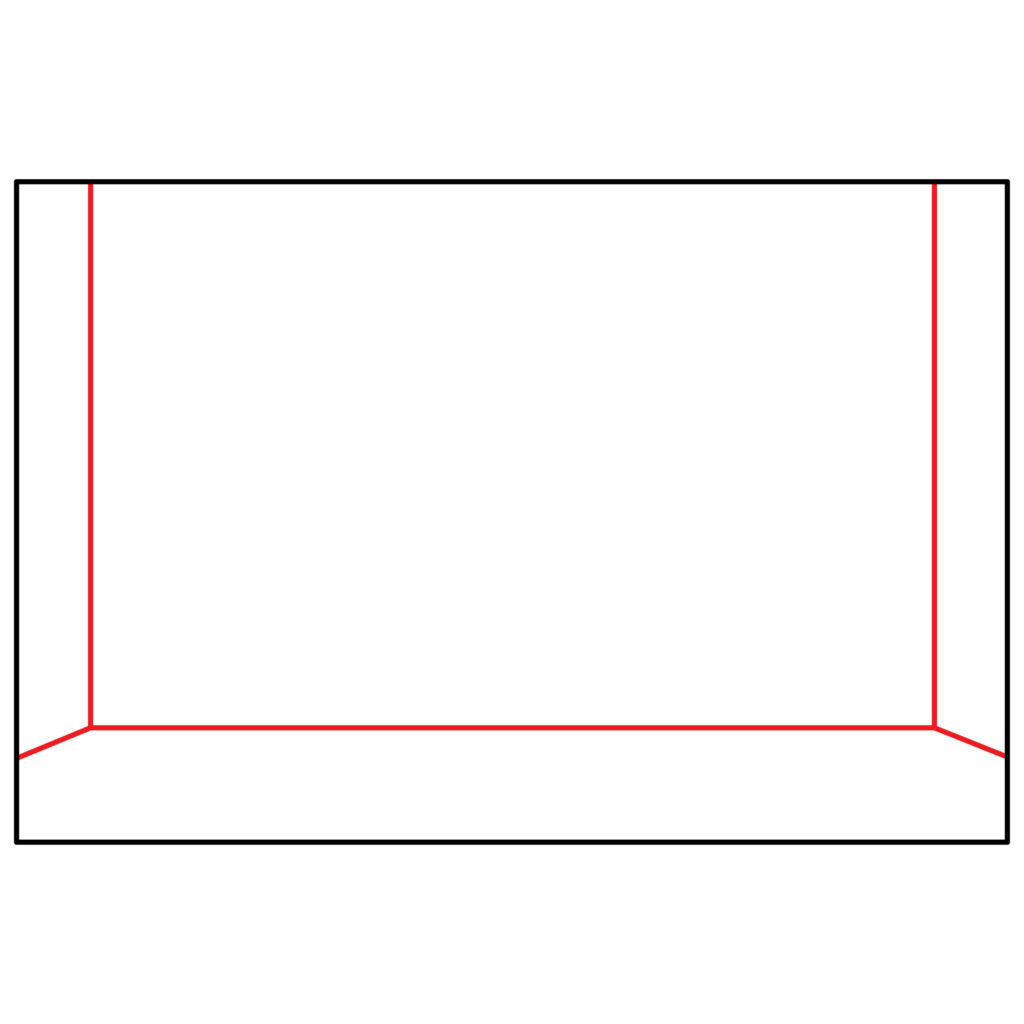
Step 3: Draw the Wall Frame
Karate dojo walls are usually designed to be bare and without distractions in order to promote focus, discipline, and a sense of tradition.
Grab your ruler once again to add the minimalistic wall frame. Draw six small squares in the center of the dojo, however remain mindful that the squares should be arranged in a set of three along the top and bottom.
Ensure a small space between the squares to avoid cluttering the area. Lastly, from the open space in the middle of the square set, draw a thin diagonal rectangle within the side of the room structure. Repeat the same process on the other side.
- Draw three small squares along the upper width of the dojo
- Draw three small squares along the bottom width of the dojo
- Add a thin diagonal rectangle along each side for dimension
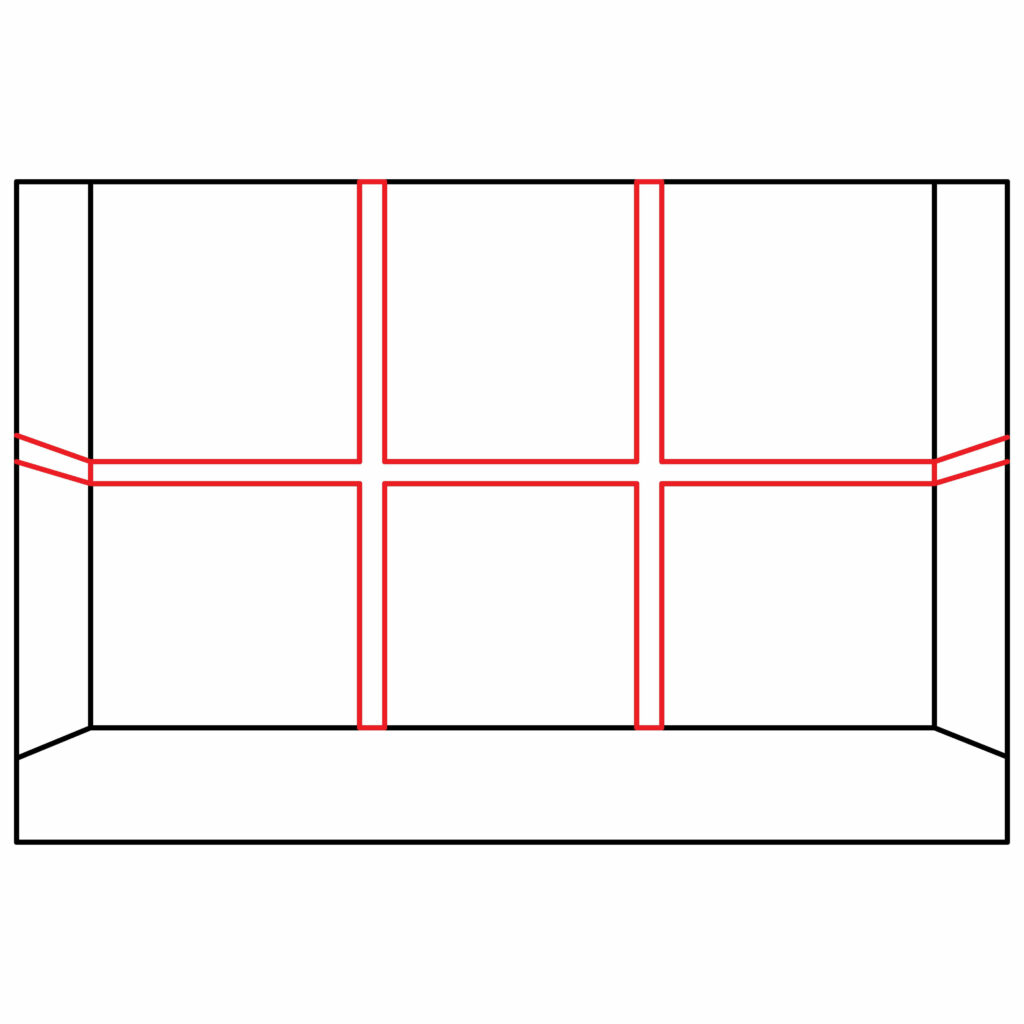
Step 4: Draw the Windows
Karate dojo windows are tall, rectangular glass panels that let in natural light. As karatists aim to enhance focus during training sessions, they normally prefer natural light as opposed to generic lighting.
To complete this step, draw four small rectangles within the squares completed in step three. Aim to add the rectangles within the outer squares, and leave the center ones bare for later on.
I.e., one rectangle in the upper-left square, one rectangle in the upper-right sqaure, one rectangle in the bottom-left square, and one rectangle in the bottom-right square.
Lastly, add some intricate detailing within each rectangle by drawing a series of horizontal and vertical lines.
- Draw four windows in total within the width of the wall frame
- Add detail to each window by drawing a series of vertical and horizontal lines
- Use a ruler for neat, straight lines
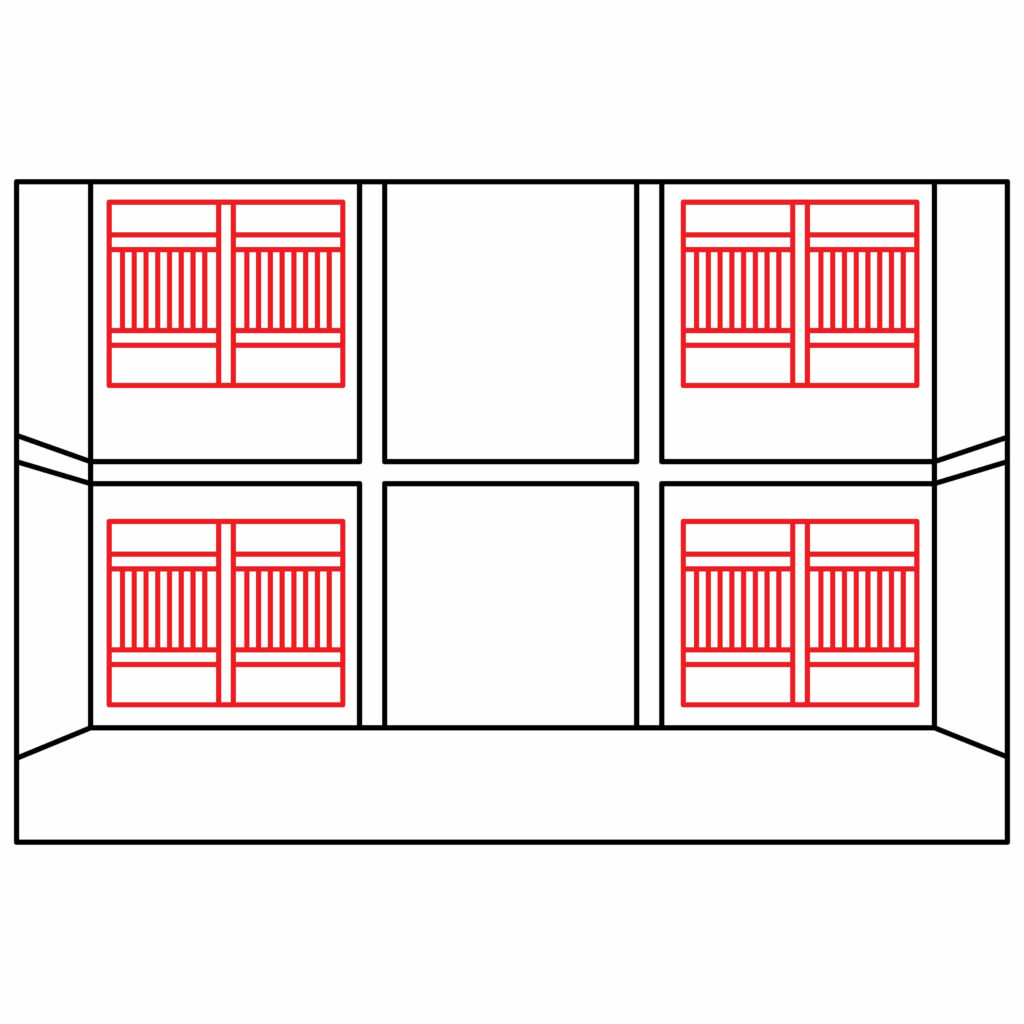
Step 5: Draw the Doors
Karate dojo doors are often in the center of the wall to symbolize equality and unity among students, as everyone enters and exits through the same entrance.
To complete this step, draw a small square within the width of the center wall frame’s square. Using a ruler for accuracy, draw a vertical line inside the square to divide the shape into two rectangles – resembling a set of double doors.
Finally, add a small square along the top of each door, and a small rectangle along the bottom of each door to provide extra detail and a touch of realism.
- Draw a small square within the center wall frame’s square
- Draw a vertical line down the middle to divide the square into two rectangles
- Add a series of squares and rectangles within each door for detail
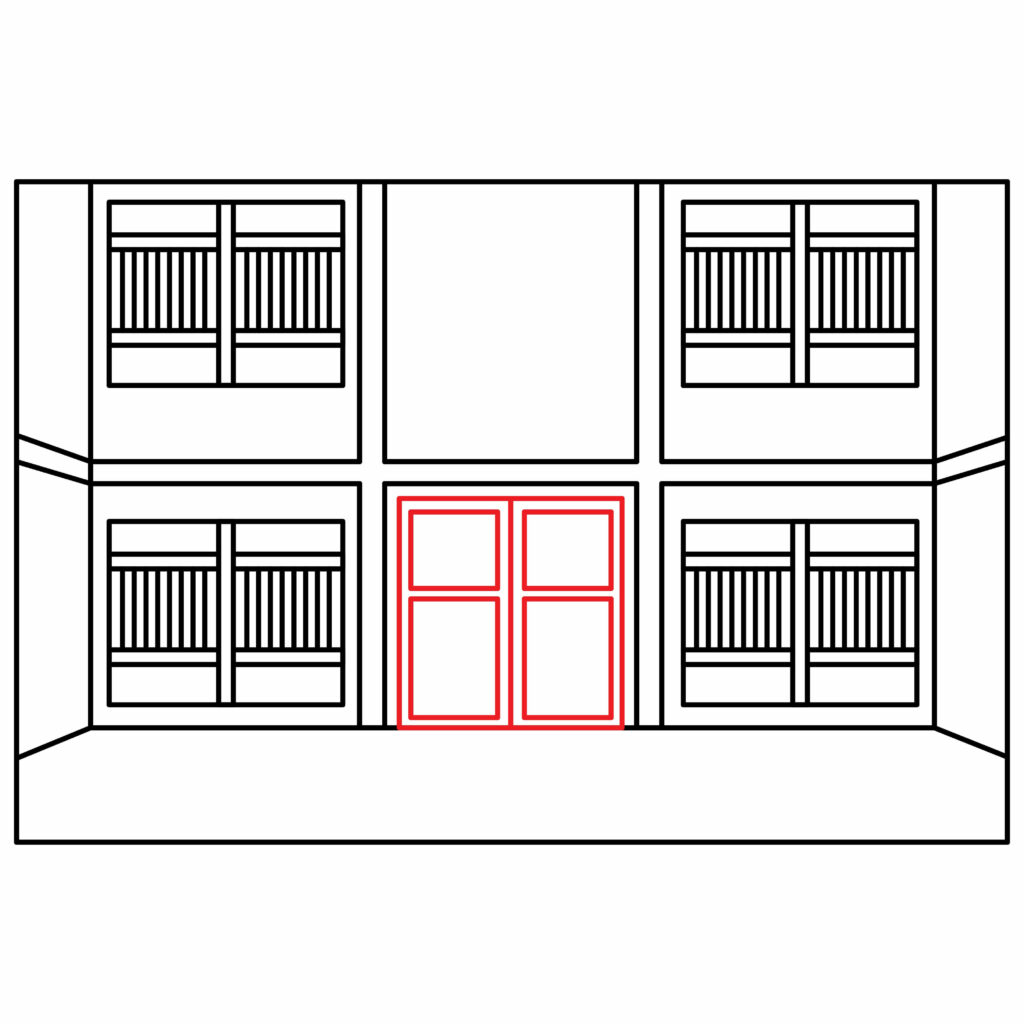
Step 6: Draw the Floor Lines
To add onto the three-dimensional effect you’ve established in step two and three, it’s essential to add some floor lines along the bottom part of the dojo. This will open up the space to the viewer’s eye a little bit more, enhancing its appeal.
Complete this step by drawing a series of vertical and diagonal lines starting from the bottom of the room structure and connecting to the baseline beneath. Ensure each line is accurately spaced apart and you’re good to go!
- Draw vertical lines at the bottom of the room structure
- Use a ruler again to ensure each line is neat
- Make sure each line is evenly spaced apart
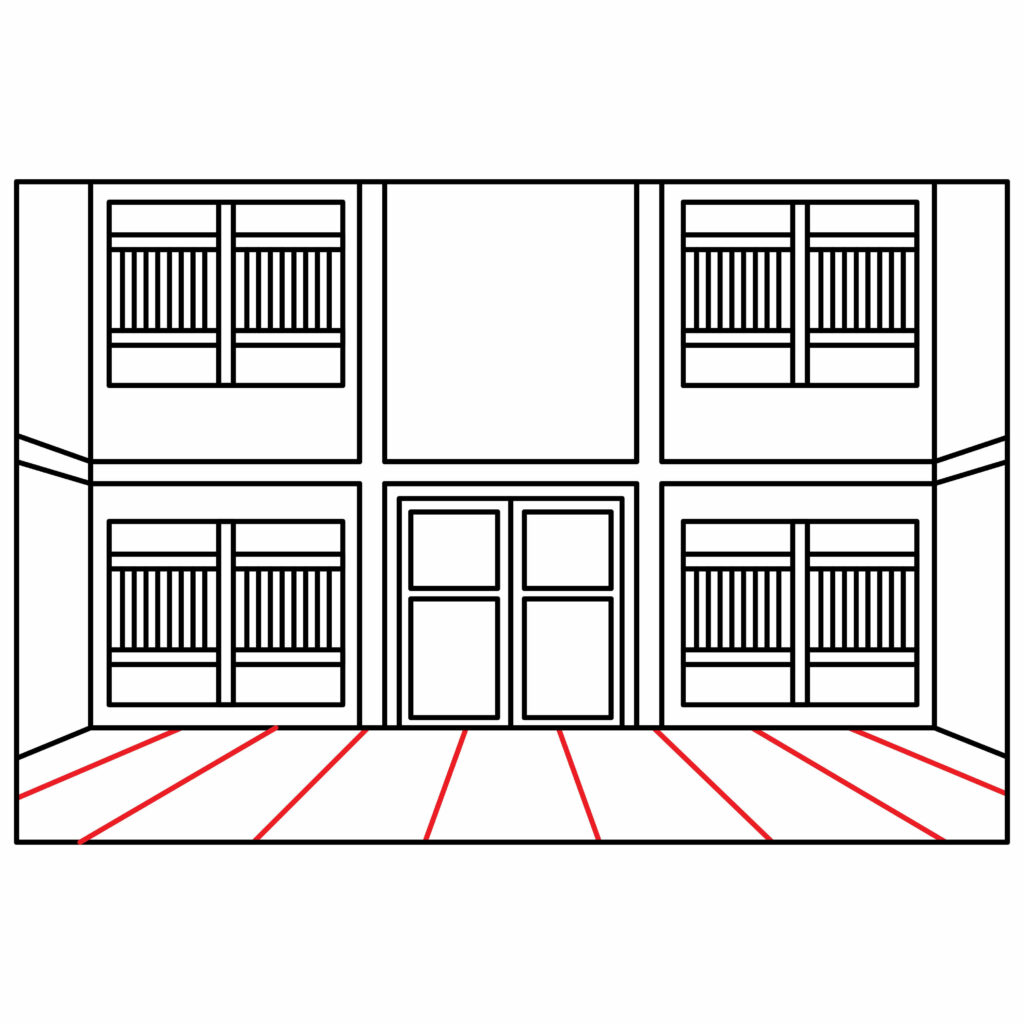
Step 7: Add the Karate Logo
Now it’s time to finish off the sketching the proccess by adding a karate logo, and what logo better represents the harmany and balance encouraged by karate than a yin and yang symbol?
Start by drawing a thin vertical rectangle on each side of the upper wall frame’s square. Erase the bottom part of each rectangle and draw a triangle with an open edge in its place instead.
Once complete, draw a small circle in the center. Use a drawing compass for smooth lines, if necessary, and add the standard yin and yang symbolism within.
- Draw two vertical rectangles along the sides of the mid-upper wall frame
- Using a mathematical drawing compass, draw a small circle in the middle
- Add the standard yin and yang symbolism within the circle
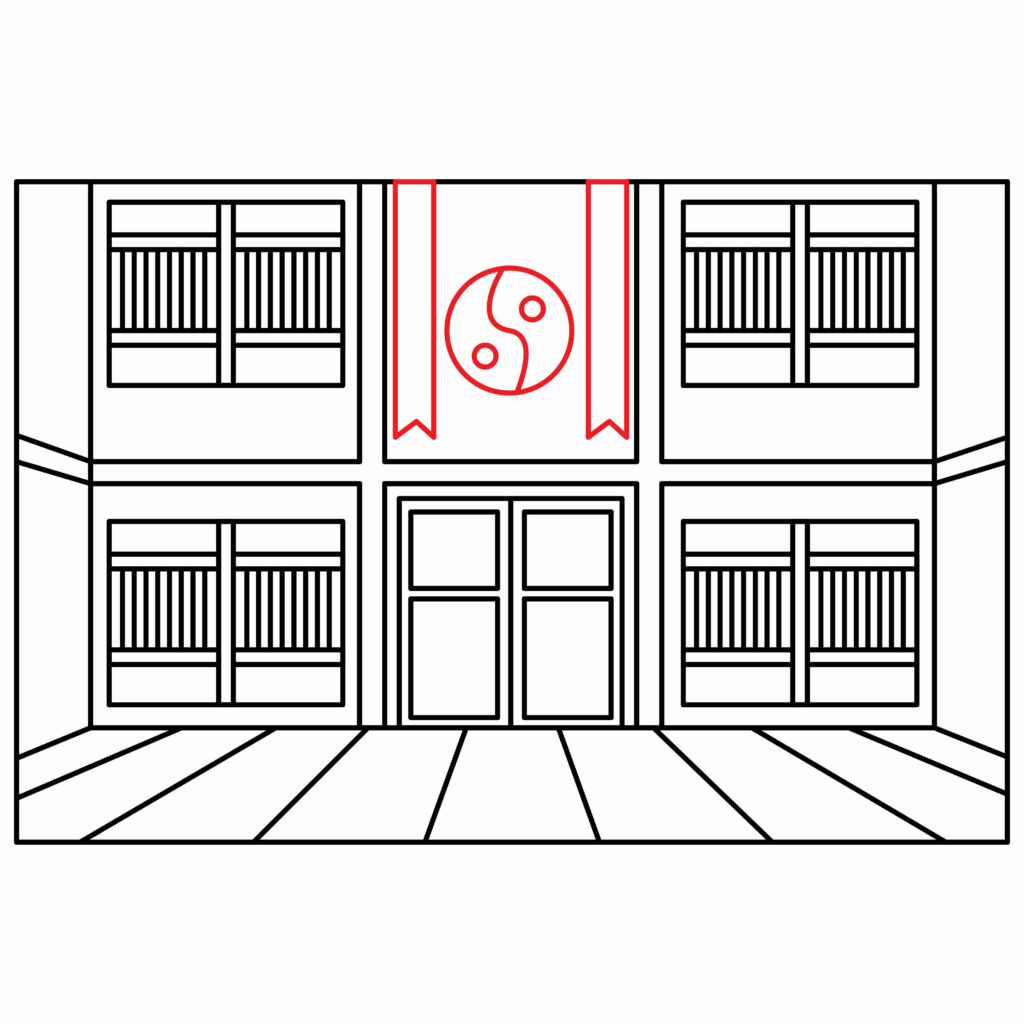
Congratulations! Your Karate Dojo Drawing is Complete
Take a well-deserved break and give your drawing hand a rest by wringing your fingers. Use this time to assess and correct the outcome of your black-and-white sketch, as well – and once you’re happy with the results, continue on with the rest of the tutorial!
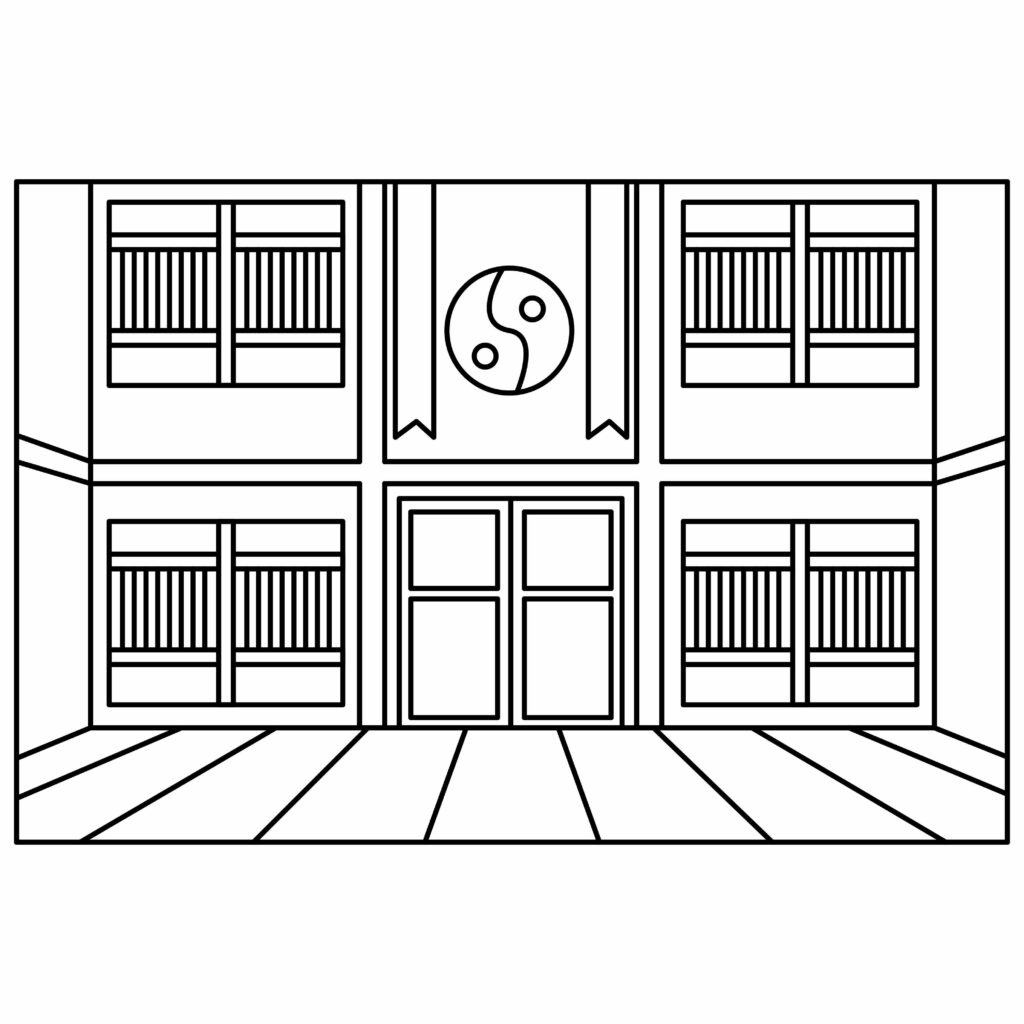
Taking Your Drawing to the Next Level
Seeing as all the technical work is done, it’s time to have some fun and incorporate a little bit of your personality onto your page.
Step 8: adding a Background
Adding a background to a drawing is like putting sprinkles on top of ice cream! It adds the finishing touches and just gives a drawing an extra boost in terms of visual appeal.
Since a karate dojo already sets the layout of the scene, consider adding a few elements within the dojo for added detail.
There are various ideas to choose from, such as a karate sensei poised at the center of the dojo’s floor. You could even add a stand holding up some karate gear, like a gi or a black belt.
Alternatively, you’re encouraged to think outside the box and add whatever elements you wish to your drawing!
Step 9: Adding Color
Make your karate dojo more realistic by adding some color! Grab whatever coloring supplies are at your disposal, and carefully color within the layout of your dojo.
Use different colors for different parts: e.g., brown for the floors, beige for the room structure, dark brown for the wall frame, window frames and doors, white for the window’s blinds, and finally, some black and white for the logo!
These different colors will compliment the overall composition quite beautifully.
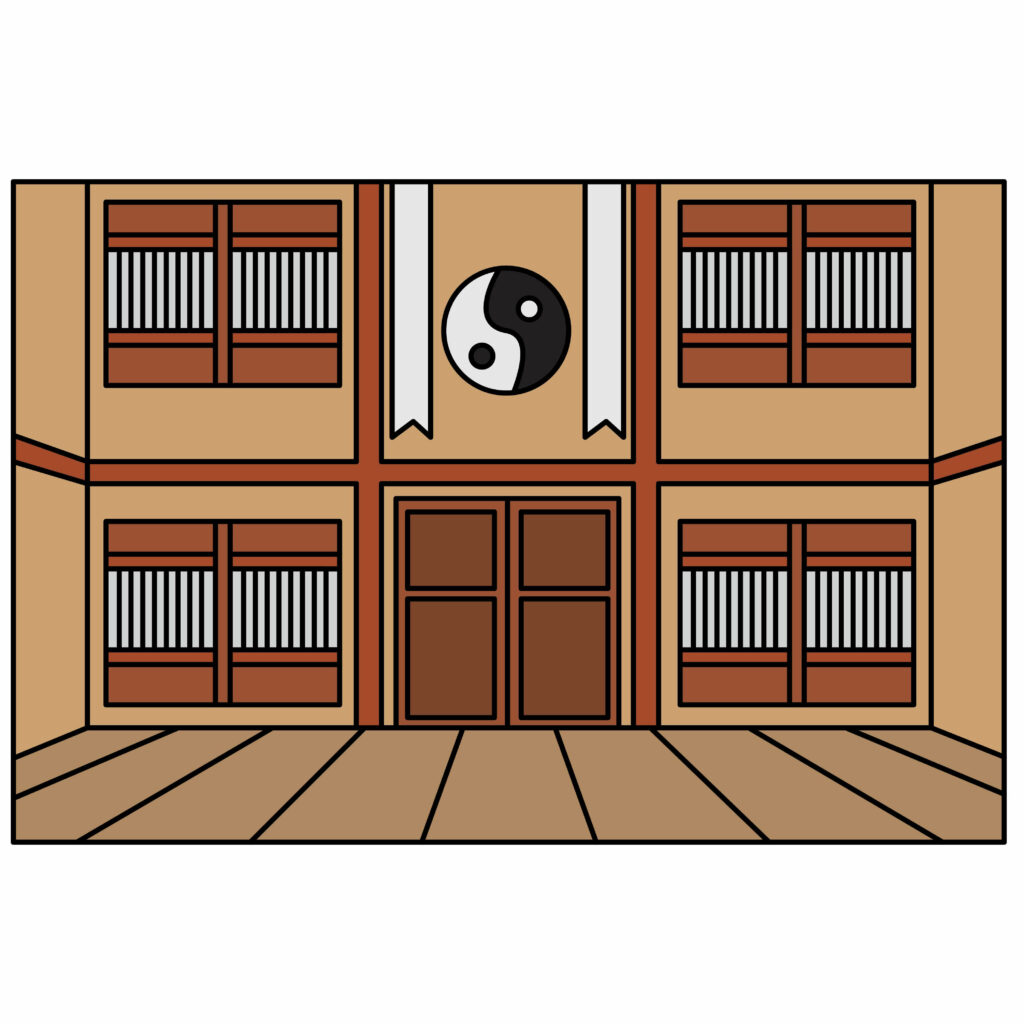
Bonus tips
Focus on the details of the floor lines, the room structure and the wall frame to accurately depict a three-dimensional dojo.
Include traditional Japanese elements such as cherry blossom trees or samurai swords in the background.
Pay attention to body positioning and stances when adding karatists to ensure authenticity in the martial arts movements.
Use shading techniques to add depth and dimension to your drawing, especially for highlighting muscle definition in action poses.
Conclusion
Well done for reading though all the steps and making it this far! If your drawing doesn’t initially resemble a three-dimensional karate dojo, don’t be dismayed. Remember, the first attempt is always the hardest and regular practice is what’s going to determine the outcome of your work. Keep pushing yourself out of your comfort zone as you draw new things, and don’t hesitate to experiment with your designs. Catch you on the flip side!
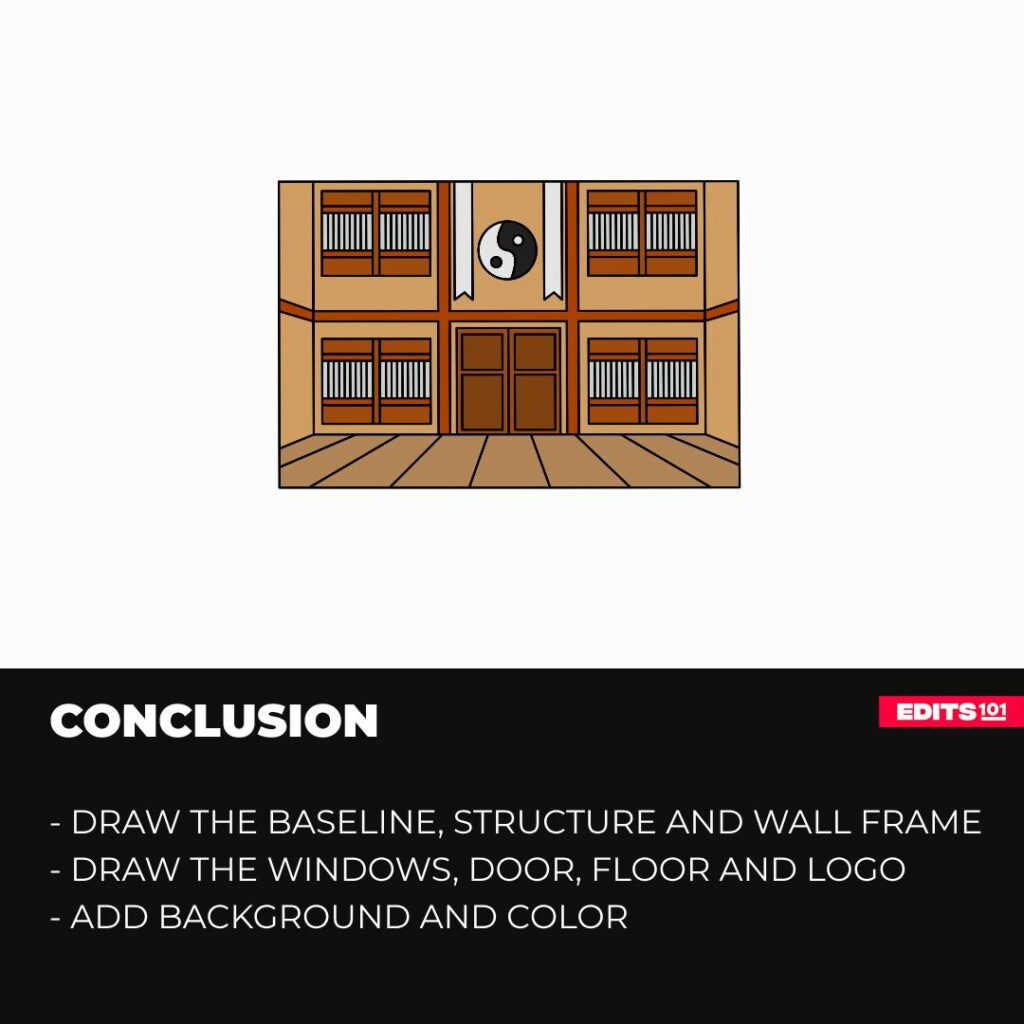
Thanks for reading & feel free to check out more of our articles!
Author Rating
Overall Rating
Summary
This tutorial will guide you through sketching a basic Karate Dojo and then enhancing it to achieve a more realistic and detailed appearance.

